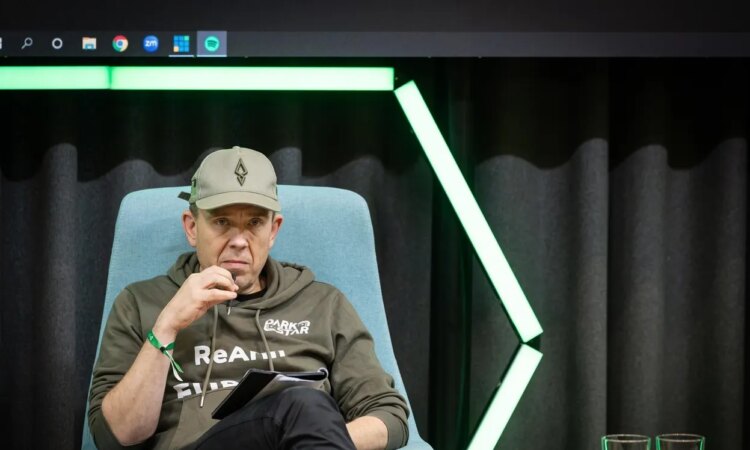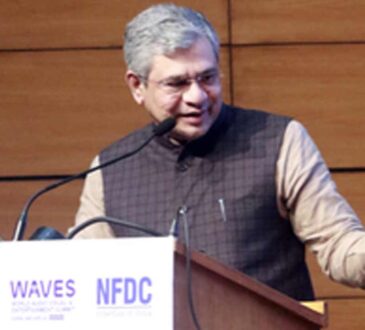
Ragnar Saas, founder of Estonian Defence VC is looking for defence companies in Ukraine
E-Residency/Meeli Kuttim
Investment in European defense technology is on the rise. According to data published by market intelligence provider Dealroom and Resilience Media, the defense sector has accounted for 6.2% of all European Funding so far in 2025, with the total sum expected to hit $2.3 billion by the end of the year. But defence tech is somewhat different from other segments within the innovation economy, not least because of the nature of the business. So, what role are startups playing within a bigger picture of European rearmament?
The rise in investment should not come as any surprise. European governments have pledged to ramp up procurement spending, so there is money on the table. Meanwhile, the war in Ukraine has turned conventional thinking on its head, notably because the widespread use of drones by both sides is providing daily evidence that something fundamental has changed. On today’s battlefield, low-cost systems are at least as important as the expensive tanks, armoured vehicles and aircraft that would once have played a dominant role. In addition, the avowed intention of the Trump administration to divert resources away from Europe and towards Asia has exposed gaps in the capabilities of European countries. Against this backdrop, startup businesses with expertise in dual-use technologies, such as AI, robotics and autonomous vehicles, are increasingly seen as the answer to at least some of the challenges faced by governments and militaries across the continent.
But the rise of defense tech as a sector represents a step outside the norm for procurement agencies, which have traditionally been accustomed to dealing with the big players of the industry – “the primes” – when buying strategically important kit. Today, those same agencies – might find themselves assessing pitches from software companies or the designers and manufacturers of low-cost drones
Consequently, they face the prospect of taking a risk on unfamiliar suppliers, some of them technology startups that won’t necessarily have a grounding in defence. According to the Dealroom/Resilience report – titled The State of Defence Tech 2025 – around 12% of C-level defense tech executives have a military background, although that figure is higher in the UK.
Dual-Use Systems
So what are these defence-tech entrepreneurs bringing to the table? The short answer is an ability to innovate quickly, a point made by Resilience Media founder, Tobias Stone. “Ukraine has shown how important startups are in a fast-moving conflict because they can innovate far more quickly than the public sector or the primes. For that to work, we need private capital to flow into the sector. Investing in defence is unique because it is both a commercial opportunity and a moral imperative,” he said in a statement.
Alex Ferrara is a London-based partner at global VC firm Bessemer Venture Partners agrees. His firm has been investing in U.S. defense tech for around ten years and has this week published a roadmap highlighting the crucial sectors – and investment opportunities in the European market. These include technologies that enable autonomous vehicles and robots (across land, sea and air), air defences, command and control systems, space sovereignty and advanced manufacturing.
One of the keys that is opening up the door of the defense industry to a broad range of European startups is software expertise. For instance, Bessemer’s latest investment (a $130 million Series B) is in Auterion, a company founded in Europe and now headquartered in Arlington with engineering operations in Zurich and Munich, Auterion has developed technology that enables drones to be flown as swarms. Its systems, with U.S. funding, have already been used in Ukraine.
Much of the innovation, he says, will come from companies developing dual-use technologies, with both military and civilian applications. “One of our criteria for investing in defense-tech is whether or not the technology is dual use,” he says. “If it is dual-use, we put it in the best bucket.” The logic here is simple. Something that can be used for civilian as well as military purposes potentially has a much larger market.
And often that dual use is a very natural fit. Ivan Jalusic is CSO and co-founder of first person view (FPV) drone company ORQA. Speaking to me at his company’s stand at the Estonian Defence Week industry show, he describes the evolution of a company that began by making drones for racing purposes.
“FPV Racing Drones suddenly got dual use,” he says. “The civilian systems brought an asymmetric advantage to the Ukrainian front line, and suddenly these dual-use systems began to be used for payload delivery missions. For the past two and a half years, these systems have been evolving into dual-use.”
The Testing Ground
And it’s the continuing war in Ukraine that is fuelling much of the innovation that we’re seeing in European defense tech. Much of it is taking place within the country itself as small companies and military units develop and modify weapons systems in response to the changing dynamics of the war.
Such is the pace of innovation that Ukraine may – when peace is established emerge as one of the major defense technology hubs in Europe and efforts are already being made to provide funding and also a route into the mainstream of Europe’s defense procurement market.
Estonian tech entrepreneur, Ragnar Saas, is perhaps best known as the co-founder of customer relationship management software company, Pipedrive. More recently, he founded Darkstar, a defence technology fund created to invest in combat-proven technologies. Based in Tallinn, Estonia, he travels regularly to Ukraine to speak to constructor teams with the potential to play a future role in Europe’s defence industry.
Darkstar is looking for teams that can transition from making a wartime product to becoming viable businesses within a wider European context. “We are asking them whether they can be part of the journey,” he says. “What we are looking at is whether this team can grow into a business that can generate 100 million revenue in the next decade.”
Arguably this is about more than money. Certainly, Darkstar is looking for genuine investment opportunities, but its focus on defense tech reflects the fact that Estonia also feels threatened. The government’s €100 million Estonian Defence Fund is a cornerstone investor in Darkstar and Saas says the the country is working with Ukraine to learn from each other and develop new systems.
Integration Challenges
However, there are some real challenges around integration. . “Ukraine has 2000 teams that are building different solutions. They are amazingly fast builders, but they are not using the same standards that Europe is using,” Saas says.
Darkstar is acting as a bridge between teams on the ground in Ukraine and military buyers across Europe while helping Ukraine’s weapons builders to understand the realities of selling their systems to Europe. “Europe is buying capabilities. Everything is part of a bigger system.That means you have to ask questions about the other systems that Europe is using.”
Equally important, once they begin to look beyond the present conflict, Ukraine’s defence tech companies will have to address Europe’s regulatory systems. “In Europe it is important to build in a way you can get licences and how you can get documentation.”
Jalusic agrees. “At the moment, there is a big will, a big talent. But what Ukraine needs to look at as the compliance standards required by Europe and U.S.,” he says.
This is perhaps a challenge for just about every relatively small company that has a workable solution. The key to building a working relationship with military buyers is to establish trust and credibility. That means not only building products to the expected standard but also having the capacity to deliver on time and to the required spec.
Certainly, there is money available, including from the public sector. For instance, NATO has its own defence innovation fund. However, Ferrara says that going forward, the capital will mainly come from private sources. “Much of the funding will come from funds like ours,” he says. “We see this is a growing area of the economy.”





